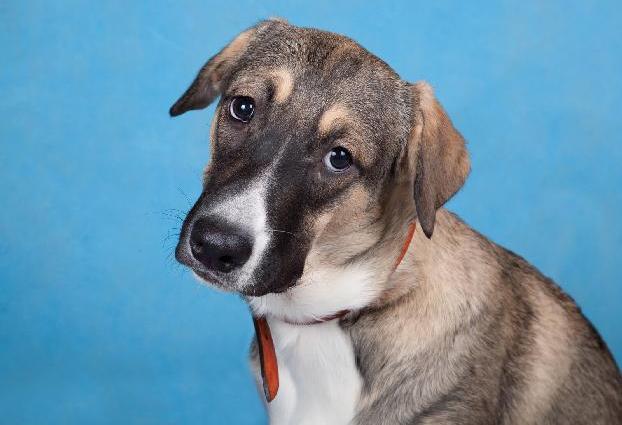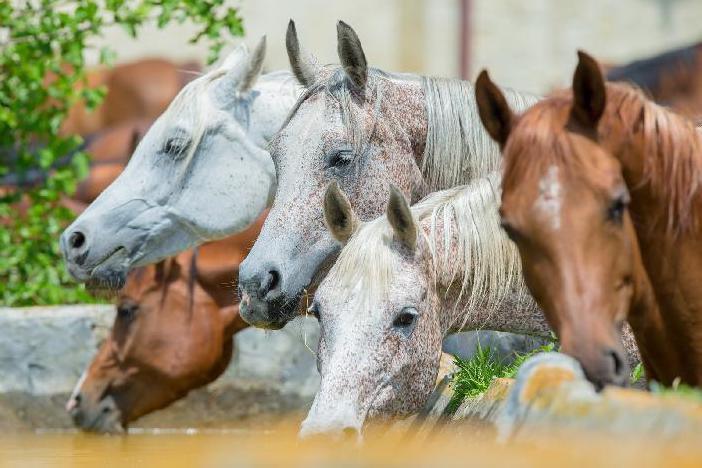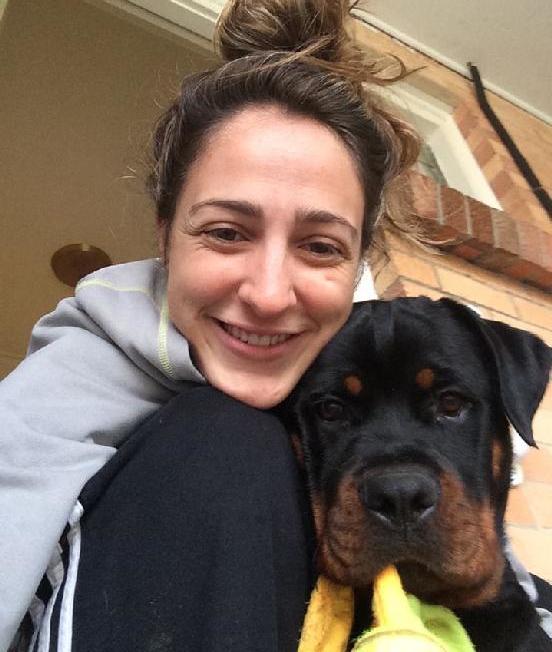
7 minute read
Sally Bradbury discusses house training a puppy, highlighting the need for clear and consistent messaging
t r a i n i n g Teaching “Leave It”
Anna Bradley explains the importance of teaching puppies the
Advertisement

“Leave/Drop” cue and why it is an essential skill to train early on Issues surrounding the relinquishment of objects is a frequent grievance in my behavior practice. It is this, plus my battles with my own young Labrador picking up everything at the moment, that has prompted me to write this piece. So many times I hear that Fido, who commonly is under a year old, perhaps even only a few months of age, has started growling when his owner comes near and won’t willingly let go of whatever he has in his mouth. This becomes the primary reason for a guardian’s visit to my practice and it saddens me, because it simply needn’t be that way. ment risks becoming the tactic of choice, e.g. puppy grabs the TV remote and is chastised either verbally or, in some cases, physically. Now, with repeated presentations of punishment, the puppy learns that a better option may be to actually avoid the situation altogether. Who wouldn’t? As a result, the puppy may start to run away or hide as the guardian pursues him and, perhaps, forcibly extracts the item. This is scary and threatening and, before long, (after exhibiting numerous appeasement signals), the puppy may begin to growl in an attempt to remove the threat, i.e. the guardian. When this doesn’t work, he may escalate to biting. Cue a visit to my practice. Even tugging an item away from a puppy’s mouth, pinching his lips, or shouting “leave it” in a confrontational manner may be enough to make him anxious about relinquishment. As a result, the whole concept of dropping things can become negative and “bad.” Sticks and Stones Dogs, like children, use their mouths to explore. Anyone who has had a puppy knows that everything goes in there…and hopefully comes out again. Lots of puppy and young dog behavior is orally explorative. We’ve all seen our puppies with stones, soil, sticks, leaves, animal parts, items of clothing, household items – you name it. Making the concept of dropping objects fun and positive right from the start goes a long way to preventing issues with resource guarding © Can Stock Photo / Miraswonderland Puppies like to learn about texture and form, what’s edible and what’s not. But not everyone makes enough effort to teach their pup how rewarding and fantastic it is to leave these objects. Instead, punishMaking It Fun What we can do instead is make the concept of dropping things fun and positive right from the start. We also need to accept the reality that puppies will be eating and exploring things orally. So, from a week or so HOST A WEBINAR FOR PPG! in, I recommend teaching a good “leave/drop” cue. I like to do this by teaching a “back away” from a fistful of food. Here’s an example: • Have the puppy face you and place a low value treat or kibble Want to Share your Knowledge and Expertise? • in a closed fist. Let the puppy move towards your hand but say nothing. Let him sniff, lick and paw at your hand. Just wait, things might take Topics may include a particular aspect of training, • a little while. As soon as the puppy settles and stops nudging, licking, pawing ethology, learning theory, behavior specifics... etc. and backs away even for a second, immediately open your anything at all your fellow pet professionals hand, praise, and let him eat the treat. would find educational. • Repeat the above until he doesn’t move towards your hand at all and just backs away. • Add in a cue. Say, “leave,” or “drop,” in a happy voice. Remember, we want the word to have a happy association. Immediately present your hand as before. As long as the puppy is still backing away, open your hand, praise, and let him eat the treat. If he paws, sniffs, nudges etc., calmly take your hand away, wait
We’ll even do some practice runs with you to help you along (if you need them!) a moment, then try again. Once you’ve established the leave/drop cue, you can start working with it more in a practical sense. I’ll normally start by saying the cue as SUBMIT YOUR PROPOSAL TO: I’m holding food in my open palm. I’ll progressively raise the value of petprofessionalguild.com/Host-A-Webinar the food from kibble, to a favorite treat, to something really high value, like chicken. Finally, I’ll work on using the cue with the food on the floor
and practice with it right in front of the puppy, with the puppy walking right past, and then with the food bowl. When I’m working with the puppy with food on the floor, I’ll always make sure I’m in an open space with no other pets or distractions around.
Generalization
Once we’ve established that leave/drop is a great thing to do, we’ve next got to think about what we need to do with all those objects the puppy might be reluctant to let go of. Firstly, we can look at environmental control and try not to leave stuff lying around that might be tempting, as it just perpetuates the reward cycle.
Meanwhile, every single time you’re out and about, in the yard, out walking etc., and you see your puppy about to grab something, you need to act quickly. Don’t wait until he’s had the item in his mouth for a while. Vigilance is key. Immediately say “leave/drop” and when he does so, toss a tasty treat (something of really high value) forwards and make a big fuss of him. Our goal is to make the relinquishment of the item much more fun than grabbing it. Consistency is essential no matter what the puppy is looking to grab hold of.
In the home, start by building in your ‘leave’ cue on a sliding scale with objects of value, from low to high. You might begin with objects the pup rarely touches or goes near, or perhaps larger objects, and then progressively work up the scale to items that are frequently picked up or those which retain owner scent. Each time the puppy leaves the item, add in a high value treat and lots or praise –but progress through the rankings slowly.
Interim Learning Period
It happens to everyone! You’ve missed the boat and the puppy picks something up and you need to retrieve it. What do you do? The item might be harmful to him or valuable to you. In the interim period while the pup is still learning, try offering a good swap. You’re not bribing here but substituting a higher value option for another item. Make sure you keep something the puppy views as super tasty or highly rewarding on hand and easily accessible – a favorite treat or toy for instance. As soon as you see the puppy with the item you don’t want him to have, calmly go up to him or call him to you and offer the swap. Don’t chase him, shout at him, or attempt to corner him. If you have issues with him running off, you may wish to use a light houseline that you can stand on while offering the swap.
It is important to spend time teaching young dogs that object relinquishment is highly rewarding and great fun. In my opinion, it should be built into general skill training rather something that is haphazardly or partially addressed. Taught correctly and positively, all dogs should become “leave happy!” n
Anna Francesca Bradley MSc BSc (Hons) is a United Kingdomebased provisional clinical, certified IAABC animal behavior consultant and ABTC accredited behavior consultant. She owns Perfect
Pawz! Training and Behavior Practice in Hexham, Northumberland, where the aim is always to create and restore happy relationships between dog and owner in a relaxed way, using methods based on sound scientific principles, which are both force-free and fun.











